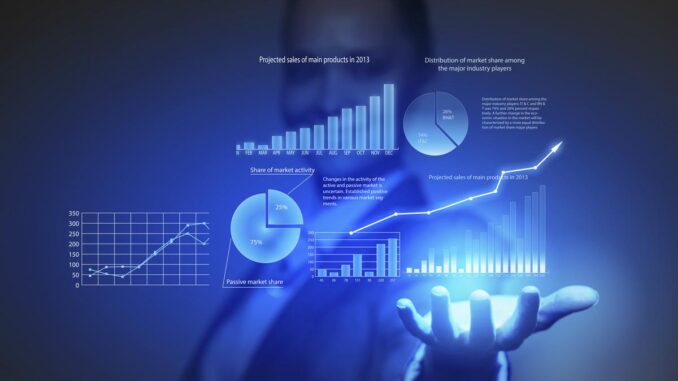
Stock price prediction refers to the use of forecasting techniques and algorithms to estimate future price movements of stocks or financial assets.
Accurate stock price predictions can aid investors and traders in making informed decisions, optimizing portfolios, and minimizing risks.








However, predicting stock prices is notoriously challenging due to the myriad of factors that influence market behavior, including economic indicators, market sentiment, geopolitical events, and the overall volatility of the stock market.
### Approaches to Stock Price Prediction
1. **Fundamental Analysis**:
– Involves analyzing a company’s financial statements, management, competitors, and market conditions to determine its intrinsic value. Key metrics include earnings, revenue, debt levels, and economic indicators.
– Investors use fundamental analysis to identify undervalued or overvalued stocks, often leading to long-term investment strategies.
2. **Technical Analysis**:
– Focuses on historical price data and trading volumes to identify trends and patterns. Common tools include moving averages, candlestick charts, and various technical indicators like the Relative Strength Index (RSI) or Moving Average Convergence Divergence (MACD).
– Technical analysts believe that past price movements can indicate future performance, enabling short-term trading strategies.
3. **Quantitative Models**:
– Utilizes mathematical models and statistical techniques to forecast stock prices. These models may incorporate a range of variables, including macroeconomic indicators, stock performance history, and market sentiment.
4. **Machine Learning and AI**:
– Increasingly used for stock price predictions through advanced algorithms that can analyze vast datasets for patterns not readily observable by human analysts.
– Common techniques include:
– **Regression Models**: Linear regression, polynomial regression, and other regression techniques to model relationships between stock prices and various features.
– **Time Series Analysis**: Methods like ARIMA (AutoRegressive Integrated Moving Average), Seasonal Decomposition, and exponential smoothing are used for predicting stock prices based on historical price data.
– **Neural Networks**: Deep learning models (like LSTM – Long Short-Term Memory networks) are particularly effective for sequential data like time series, capturing long-term dependencies and trends.
5. **Sentiment Analysis**:
– Analyzing news articles, social media posts, and other text data to gauge market sentiment, which can influence stock prices. Natural Language Processing (NLP) techniques can extract insights from unstructured data sources to improve predictions.
### Challenges in Stock Price Prediction
1. **Market Volatility**:
– Stock markets can be highly volatile, influenced by unforeseen events (economic crises, natural disasters, geopolitical events), making reliable predictions challenging.
2. **Non-Stationarity**:
– Financial markets are non-stationary, meaning statistical properties like the mean and variance change over time, complicating the modeling process.
3. **Data Quality**:
– Inaccurate or incomplete data can lead to poor predictions. High-quality, consistent datasets are essential for effective modeling.
4. **Overfitting**:
– Complex models can become overly specialized to historical data and fail to generalize properly to unseen data, resulting in inflated performance metrics during testing but poor application in real-world settings.
5. **Behavioral Factors**:
– Human emotion, decision-making, and psychology can significantly affect market movements, often in unpredictable ways.
### Evaluation Metrics for Predictions
To assess the accuracy and effectiveness of stock price prediction models, various performance metrics can be employed:
1. **Mean Absolute Error (MAE)**: The absolute difference between predicted and actual values, averaged over all predictions.
2. **Mean Squared Error (MSE)**: The average of the squares of the errors between predicted and actual values, emphasizing larger errors.
3. **Root Mean Squared Error (RMSE)**: The square root of MSE, providing an error metric in the same units as the original data.
4. **R-squared**: A statistical measure showing the proportion of variance in the dependent variable that can be explained by the independent variables in the model.
5. **Sharpe Ratio**: Evaluates the return of an investment relative to its risk, considering the volatility of stock price predictions.
### Future Trends in Stock Price Prediction
1. **Integration of AI and Big Data**:
– Leveraging vast datasets from various sources such as social media, news, and economic indicators will enhance predictive models.
2. **Improved NLP Techniques**:
– Enhanced NLP methods to gauge market sentiment and aggregate sentiment data to improve predictions.
3. **Automated Trading Systems**:
– Increased reliance on automated trading algorithms that use machine learning for real-time trading decisions based on stock price predictions.
4. **Quantum Computing**:
– The potential for quantum computing to process and analyze vast amounts of data and complex models that could revolutionize prediction capabilities.
5. **Regulatory Compliance**:
– Heightened attention to data privacy and ethical considerations in algorithmic trading practices and predictions.
### Conclusion
While stock price prediction is a complex and challenging task, advancements in machine learning, data analytics, and computational techniques are enhancing our ability to forecast future stock prices. Investors must remain aware of the inherent risks involved in trading based on predictions, as no model can guarantee accuracy. Combining various approaches, rigorous validation, and ongoing adjustment for market conditions can improve the likelihood of successful investments.

Leave a Reply